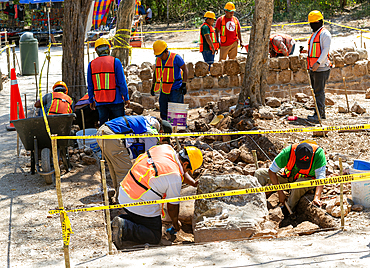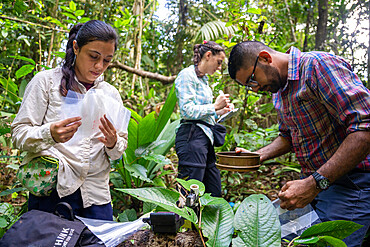Results
3 results found
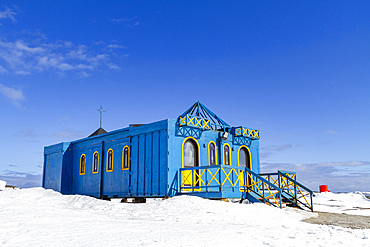
Views of the Catholic church at the Chilean research base Presidente Eduardo Frei Montalva, Antarctica, Southern Ocean, Polar Regions
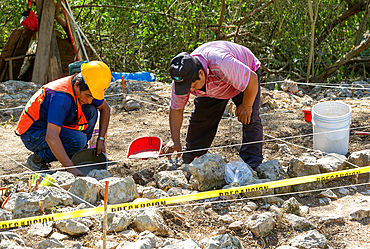
Archaeologists at work Mayan ruins, Chichen Itza, UNESCO World Heritage Site, Yucatan, Mexico, North America

Technicians loading/unloading cargo/freight from the supply plane at Concordia. French;in blue) and Italian;in red) technicians help unload the Basler - Douglas DC3, which delivers scientific and/or technical equipment to the Concordia station several times a month during the summer. It takes a team of 6 to 20 people just 3 minutes to unload the 2 tonnes of cargo, reload the same amount of equipment into the plane and refuel the aircraft with kerosene. As soon as these operations are completed, the plane is ready to leave again. Concordia Antarctic Research Station, Dome C plateau, East Antarctica.
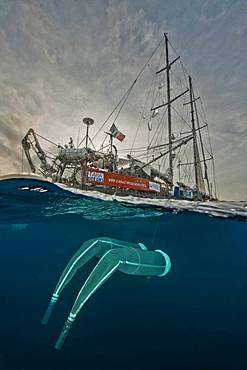
Tara Oceans Expeditions - May 2011. Tara with deployed plancton nets. On "station", the boat is drifting without engine or sails. Tara Oceans, a unique expedition: Tara Oceans is the very first attempt to make a global study of marine plankton, a form of sea life that includes organisms as small as viruses and bacterias, and as big as medusas. Our goal is to better understand planktonic ecosystems by exploring the countless species, learning about interactions among them and with their environment. Marine plankton is the only ecosystem that is almost continuous over the surface of the Earth. Studying plankton is like taking the pulse of our planet. Recently, scientists have discovered the great importance of plankton for the climate: populations of plankton are affected very rapidly by variations in climate. But in turn they can influence the climate by modifying the absorption of carbon. In a context of rapid physico-chemical changes, for example the acidification observed today in the world's oceans, it is urgent to understand and predict the evolution of these particular ecosystems. Finally, plankton is an astonishing way of going back in time ? a prime source of fossils. Over the eons, plankton has created several hundred meters of sediment on the ocean floors. This allows us to go back in time, to the first oceans on Earth, and better understand the history of our biosphere. More than 12 fields of research are involved in the project, which will bring together an international team of oceanographers, ecologists, biologists, geneticists, and physicists from prestigious laboratories headed by Eric Karsenti of the European Molecular Biology Laboratory. Galapagos
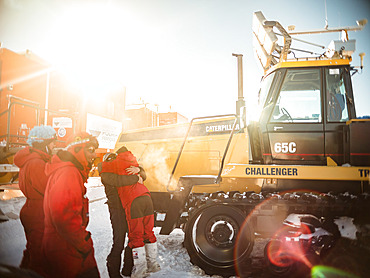
Tractor parked in front of the Raid caravan. Two technicians hug each other. The Raid supplies the resort 2 or 3 times each summer. A one-way trip represents a distance of 1,200km, an altitude difference of 3,200m, and a driving time of 10 days at a rate of 12 hours per day. Each arrival of the Raid team at Concordia is a moment of joy and celebration. Concordia Antarctic Research Station, Dome C plateau, East Antarctica.
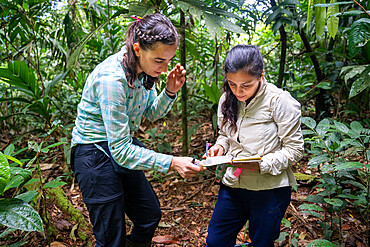
27-year-old researcher and her team working on nitrogen exchange between bacteria and the roots of legumes in the rainforest at the "La Selva" research station in Puerto Viejo de Sarapiqui, Costa Rica
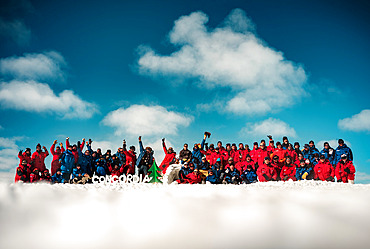
Concordia technicians and scientists, Christmas tree, Concordia in letters made of ice/snow, Igloo. Group photo of the team at Concordia during the summer. The Italians are in red and the French in blue. The ratio is about half Italians and half French; half technicians and half scientists. Concordia Antarctic Research Station, Dome C plateau, East Antarctica.


